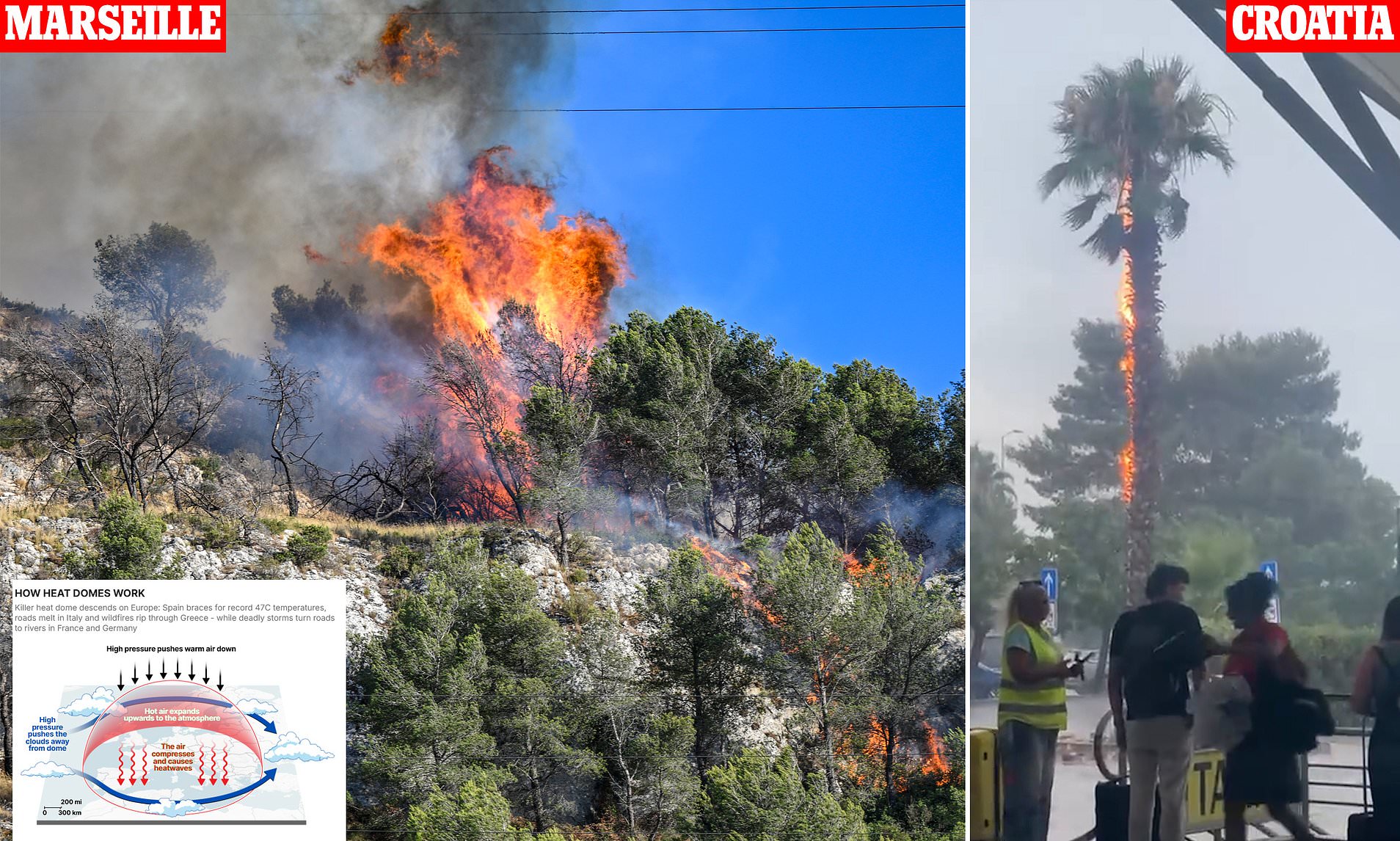Impact of the Recent Heatwave on Europe
A recent study has revealed that as many as 2,300 people died from heat-related causes in 12 European cities during a two-week heatwave. This grim finding highlights the growing dangers posed by extreme weather events, which are increasingly linked to climate change.
The research, conducted by British scientists, focused on a 10-day period ending on July 2. The cities studied included London, Madrid, Barcelona, and Milan. According to the findings, climate change contributed to temperature increases of up to 4 degrees Celsius, which were associated with 1,500 of the deaths recorded.
Last month was the third-hottest June on record globally, following 2024 and 2023. In Western Europe, June saw its warmest temperatures since records began, according to the EU’s Copernicus Climate Change Service. In areas north of Lisbon, maximum feels-like temperatures reached 48°C, about 7°C above average, leading to “extreme heat stress.”
Portugal alone reported 284 deaths during the ongoing heatwave, with high temperatures expected to persist through the middle of the week. The Foreign Office issued warnings to Brits about the increased risk of wildfires in the region.
Wildfires Across Europe
Wildfires have been a major consequence of the heatwave, affecting several countries. In France, more than 100 people were injured, and hundreds were evacuated as wildfires broke out on the outskirts of Marseille. Around 800 firefighters were deployed to control the blaze, which spread rapidly due to strong winds.
Marseille’s mayor, Benoît Payan, described the efforts as “waging guerilla warfare” against the fire, with emergency services working tirelessly to prevent further damage. In neighboring Spain, over 18,000 people in Tarragona were ordered to stay indoors as wildfires raged out of control, destroying more than 3,300 hectares of vegetation.
Spain experienced a severe heatwave earlier this year, with the national weather agency AEMET reporting it as the country’s hottest June on record. So far this year, around 21,000 hectares of land have burned, and two people died in a wildfire in Catalonia on July 1.
Vulnerable Populations and Health Risks
Heatwaves pose significant risks to vulnerable populations, including the elderly, the sick, young children, and outdoor workers. Scientists at Imperial College London and the London School of Hygiene and Tropical Medicine found that there may have been approximately 2,300 heat-related deaths in the cities studied during the 10 days ending on July 2.
Although no official death toll is available yet, the study estimates that 1,500 of these deaths were linked to climate change, which intensified the heatwave. Researchers used epidemiological models and historical mortality data to calculate the number of deaths, considering cases where heat exacerbated pre-existing health conditions.
Garyfallos Konstantinoudis, a lecturer at Imperial College London, emphasized the severity of even small temperature increases. “An increase in heatwave temperature of just two or four degrees can mean the difference between life and death for thousands of people,” he said. He added that heatwaves are often referred to as “silent killers” because most deaths occur in homes and hospitals, rarely making headlines.
Global Temperature Trends and Regional Impacts
Globally, last month was the third warmest June on record, with the hottest June occurring in 2024 and the second-hottest in 2023. Several countries recorded surface temperatures above 40°C, with some areas reaching as high as 46°C in Spain and Portugal.
The extreme heat has continued into July, prompting tourist hotspots to provide relief measures. In Athens, the Acropolis limited its operating hours for a second consecutive day due to heatwave conditions. The Greek Ministry of Culture cited safety concerns for workers and visitors.
In France, the wildfire near Marseille lost intensity but remained a concern for firefighters, who warned of potential flare-ups. Officials lifted lockdowns for affected residents, though some faced the possibility of returning to destroyed homes.
Widespread Wildfire Threats
The threat of wildfires extends beyond Spain and France. In Greece, authorities are preparing for an extreme wildfire threat, with several regions at the highest risk level. Bulgaria also faced wildfires after recording a temperature of 42°C. In North Macedonia, a 30-day State of Crisis was declared to mobilize emergency services for future fires.
Storms brought heavy rain to Croatia, while a tree caught fire near Split Airport due to lightning. In Poland, 7,000 troops were put on alert to assist with evacuation efforts as torrential rains are expected.
Rising Temperatures in the UK
Temperatures in the UK are expected to rise throughout the week, with predicted highs in the low 30s. The Met Office forecasted temperatures ranging from 26°C to 28°C in central parts of the country from Wednesday. By the end of the week, even northern and western regions could see temperatures in the high 20s and low 30s.
A yellow heat health alert was issued for the southern half of England, highlighting the ongoing risks posed by the heatwave. As the situation continues to evolve, authorities across Europe remain vigilant in addressing the challenges posed by extreme weather conditions.







